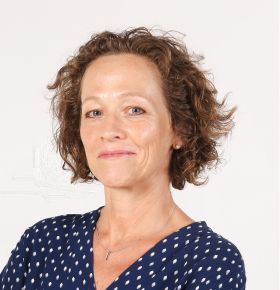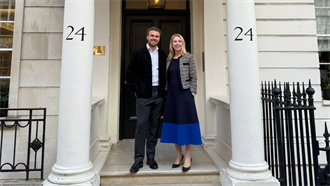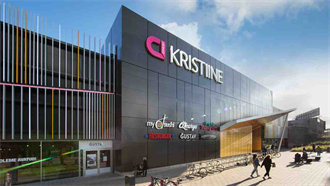The ranks of women holding senior leadership roles in European commercial real estate are growing, but there is still a long way to go for companies to become truly diverse and inclusive.
Many women in senior management positions in commercial real estate can recount tales of situations early in their careers that now bring a smile to their lips – or still irk them after all those years. One was advised to deepen her voice and laugh less; another joined an investment bank in New York amid huge debate over whether women could wear pant suits; and many have been asked in interviews how they intended to ‘organise the kids at home’.
Things have come a long way since then, and gender diversity in the industry has improved markedly, say senior female executives and diversity experts consulted by PropertyEU. The full article, containing the views of over a dozen female leaders, can be accessed here.
However, a lot more needs to be done to forge real change, starting in corporate boardrooms and filtering down to lower management levels, so that diversity imbues business culture and strategy and is handed down to younger generations of professionals.
‘At least the subject of diversity is now recognised and talked about,’ says Amanda Clack, an executive director at CBRE and former RICS global president. ‘Leaders are taking the agenda seriously and want to do something about addressing diversity and inclusion as this leads to the right business outcomes, attracts the top talent and gives diversity of perspectives within the business that leads to change and innovation.’
The gender balance is slowly changing for the better, she adds, pointing to statistics which show that the number of qualified RICS professional female surveyors has gone from 6% in 1992, when she first qualified, to around 15% today. ‘There’s been some improvement, but it is not changing fast enough.’
A passionate advocate for diversity and inclusion - commonly referred to as D&I - Clack has through the years campaigned tirelessly for change in the notoriously male-dominated built environment and property sector. She co-authored the book Managing Diversity and Inclusion in Real Estate, which was published in 2019. At CBRE, she is chair of the strategy board, head of strategic advisory and also executive sponsor for the firm’s award-winning Ability Network.
Clack is optimistic further progress can be made on diversity in the industry. ‘There is hope when I look at the number of graduates and trainees where the split by gender shows 24% female now. That at least gives me hope.’ She stresses that the focus within organisations needs to be on a gender-balanced culture. ‘It’s not a case of one or the other, male or female, but both! However, that has to start at the top in the boardroom, and whilst we have moved a long way to targets such as 30% female, we still have a way to go.’
Focus on middle management
Clack’s research for her book highlighted an interesting finding: that the focus on furthering diversity and inclusion in real estate needs to be on middle, rather than senior, management. ‘Senior leaders now get this is a priority in the most part, which is reassuring, and those entering the profession want to join a progressive organisation where they can be themselves and mirrors their value sets. What is key now is addressing that middle management layer.’
Serena Althaus, a London-based senior managing director at global executive search firm Ferguson Partners, which serves a large number of clients in the real estate sector, says diversity awareness and action are increasing, but ‘we still need to massively address gender imbalance and the issue of unconscious bias [towards men] in hiring processes’.
Althaus observes that the figures for female recruitment in Europe are ‘not bad’ at the junior end of the profession. ‘More women go into real estate in Europe than men at the junior end, marginally.’ But, she qualifies, ‘once you get to a director level and above, unfortunately there is still a lot of work to be done. There’s a massive drop-off once women get to mid to senior levels.’
Last year, Ferguson’s diversity placement rate in Europe – which includes Black, Asian and minority ethnic (BAME) diversity as well as gender diversity - was 32%, down from 35% in 2019 but up from 28% in 2018 and 31% in 2017.
By comparison, the placement rate in the US was 43% in 2020. The reason for the higher figures in the US, explains Althaus, is that Ferguson undertakes more board appointments there than in Europe, and diversity hires for board positions are more accessible. Ferguson is typically focused on C-suite positions (i.e. CEO, COO, CFO) and 1-2 levels below. ‘If you strip out the board appointments, the placement levels in Europe and the US are about equal,’ says Althaus. With offices in North America, Asia and Europe, Ferguson Partners conducts more than 300 executive searches a year.
Cultural differences
Althaus, who has nearly 30 years of experience in the search industry from board to director level and who is a key member of Ferguson’s Diversity Practice, says her work has also revealed cultural differences across Europe. Scandinavian companies lead on diversity, followed by the UK, Germany, and the Netherlands, with Southern European countries typically playing catch-up.
Globally, Canadian firms are also ahead of the curve with recent executive search mandates awarded to Ferguson specifically requesting female-only candidates for their heads of Europe or global head positions. There are also differences in the type of company embracing diversity, with institutional investors in particular leading the way. ‘LPs generally are pushing the agenda and that’s encouraging better behaviours by the GPs,’ she says.
In terms of real estate disciplines, the legal profession, capital raising and asset management are areas where women are relatively well represented, while female-friendly asset classes include retail and, to a lesser extent, offices. Logistics still remains a male-dominated sector.
Boardroom quotas
Some countries have turned to legislation to force companies to be more diverse. In Germany, the government is set to introduce a mandatory quota for the number of women working at senior management level in the country’s listed companies, in a move hailed as an ‘historic’ step towards sexual equality in corporate boardrooms.
Under the proposal, management boards with more than three members must include at least one woman, replacing a voluntary system that critics argue has failed to achieve the required shift towards gender equality.
Women make up 12.8% of the management boards of the 30 largest German companies listed on the blue-chip DAX index, according to a September survey by the Swedish-German AllBright foundation. The DAX index includes residential property heavyweights Deutsche Wohnen and Vonovia. The German figure compares with 28.6% in the US, 24.5% in the UK and 22.2% in France, the study showed.
In the Netherlands, where the gender ratio in listed company boardrooms is similarly skewed towards men, a bill currently before parliament proposes that each male supervisory board member who resigns or retires is replaced by a woman - until at least one third of the board consists of women. The mandatory measure would initially apply for a period of eight years, with a review taking place after five years.
Opinions are divided on the desirability of quotas, with some arguing that such ‘positive discrimination’ is based purely on gender, rather than skill sets or talent. Says Althaus: ‘I understand where such measures are coming from, but I think it should still be based on merit versus quotient.’
Flexible work hours
A perennial stumbling block for women during the course of their careers is juggling work with having and raising children. Many agree the push for greater flexibility to deal with childcare issues – already seen prior to Covid – has gained an unexpected boost from the pandemic as lockdowns forced legions of employees into working from home.
‘Lockdown has definitely helped level the playing field for women,’ remarks Althaus. ‘In previous times there was a bit of a reactionary approach that everyone had to show face in the office and work standard business hours. That’s often not sustainable for women with young children. With everyone now working from home, they can work around that.’
Margaret Sweeney, CEO of IRES, says the work from home (WFH) trend has provided ‘phenomenal flexibility’ for women. ‘It’s changing the dynamic that all work happens between 9.00-5.30 which has long been the model.’ Lisette van Doorn, CEO of ULI Europe echoes this, saying: ‘A year ago we would have had a totally different discussion about WFH than we are having now, and I feel this may also be a game-changer for diversity because we see that businesses can be kept going well even with everyone working remotely. So the discussion is different.’
Lonneke Lowik, CEO of INREV, remarks that the pandemic has been ‘beneficial for gaining a better understanding of the pros and cons of working from home’.
‘What is helping now is that men are working for home, so they see first-hand what the challenges are, which hopefully creates awareness. You can get a lot of work done and it doesn’t need to happen between 9 and 5. So perhaps this year will ultimately help develop a more level playing field.’
New awareness regarding flexibility is already becoming evident in certain ways, such as in expectations on worker connectivity and availability. Outbound emails from CBRE’s Clack, for example, now carry the following standard line at the bottom: ‘I support inclusion. At CBRE we work flexibly, so while it may suit me to email you now, I do not expect a response if it is outside your working hours.’
Change starts at the top
Many senior women agree there are lots of examples of good diversity practice in the sector, but that the impetus for change must come from the top. Says Clack: ‘The key starts at the top with leadership showing that having a diverse and inclusive organisation, with the right culture that allows everyone to bring themselves to work everyday and be their best possible self, matters by having it on the boardroom agenda, “walking the talk” and making sure actions happen.’
Ferguson’s Althaus agrees: ‘More and more companies are now focusing on their D&I agenda and therefore it’s a question of needing to have an agenda in place otherwise you’re going to be looking very reactionary.’
Besides gender equality, ethnicity is climbing up corporate agendas in the wake of the global Black Lives Matter (BLM) movement. ‘Certainly in the US, we’re seeing as much attention being paid to ethnicity as to gender diversity; but more needs to be done in Europe,’ says Althaus. CBRE’s Clack stresses the need to support diversity of talent across the board, regardless of group identity. ‘When you look at those with a disability, those who are BAME or those who are LGBTQ+, the statistics are out of kilter with wider society. Ultimately, we need to “maintain the bar” in terms of standards of entry but must widen the gate to encourage more people to come through who are representative of the community as a whole.’
PropertyEU collected the views of 12 female leaders on diversity & inclusion in European commercial real estate. The full article appears in the February 2021 issue of PropertyEU Magazine.


































